Hi River Roaders,
This week’s blog is a collaboration with Andrea Mangum, a scientist with a geology/hydrology background. Andrea has spent a lot of time over the past year on invasive plant removal and native plantings in our native plant garden area.
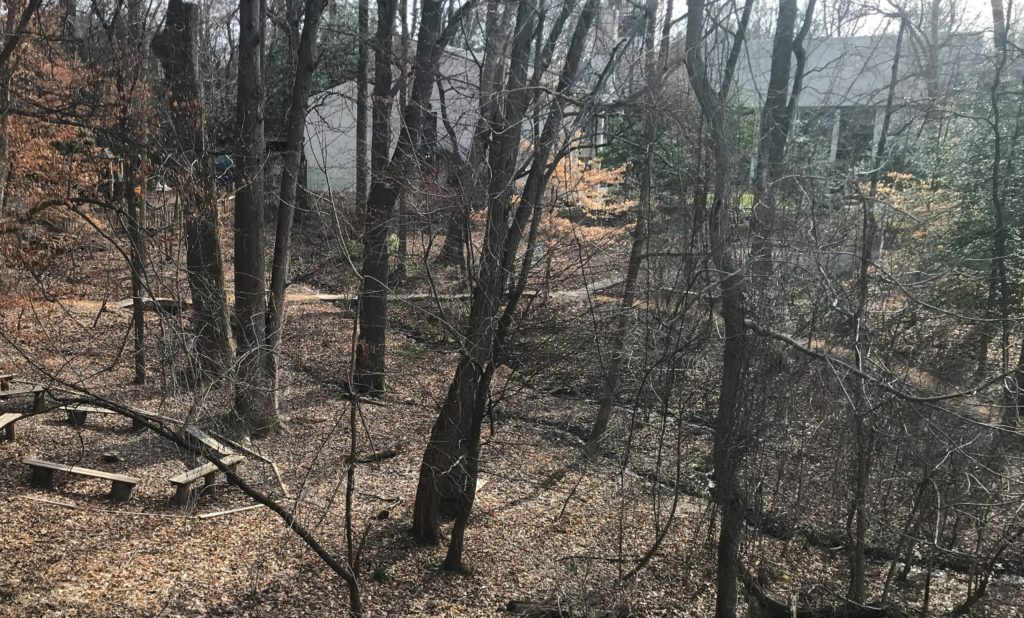
At the heart of RRUUC’s conservation area, natural springs flow year-round; providing life-giving water that sustains wildlife and plants.
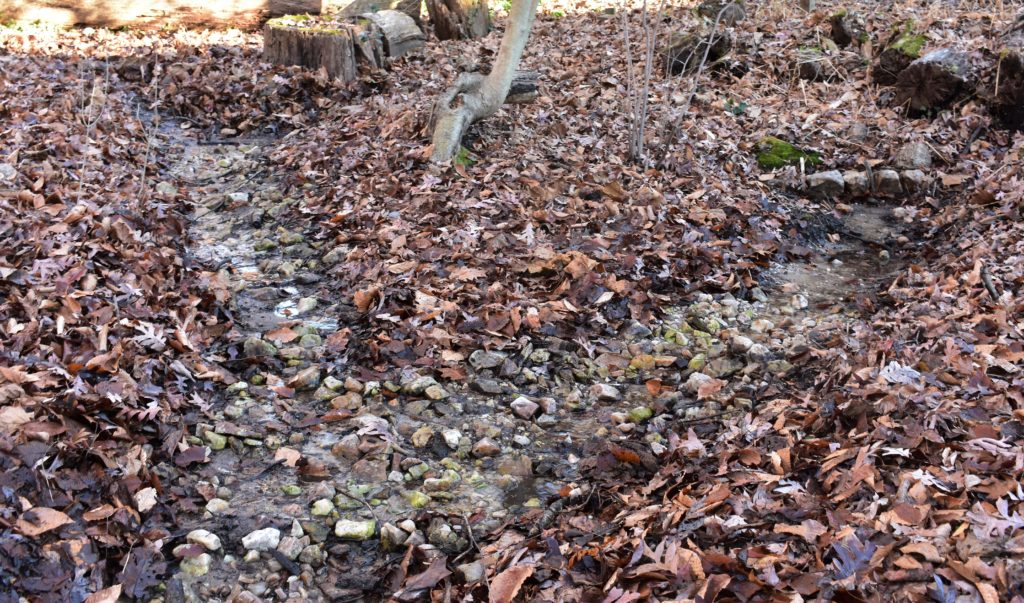
Springs often occur when a hillside intersects the local water table. They also can occur at contacts between geological formations. Rainfall recharges groundwater stored in fractures of the underlying bedrock as well as in the lower zones of the soil profile where “saprolites” form as a result of deep weathering of the bedrock’s surface.
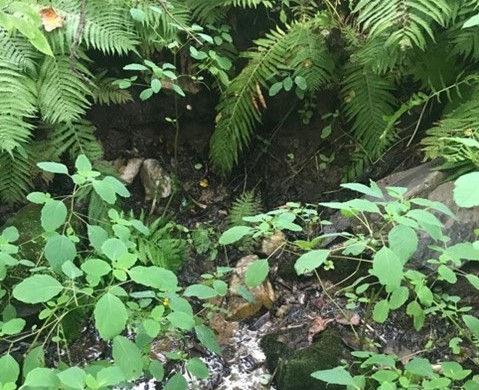
The springs are hidden in summer by thick stands of native ostrich ferns and jewelweed.
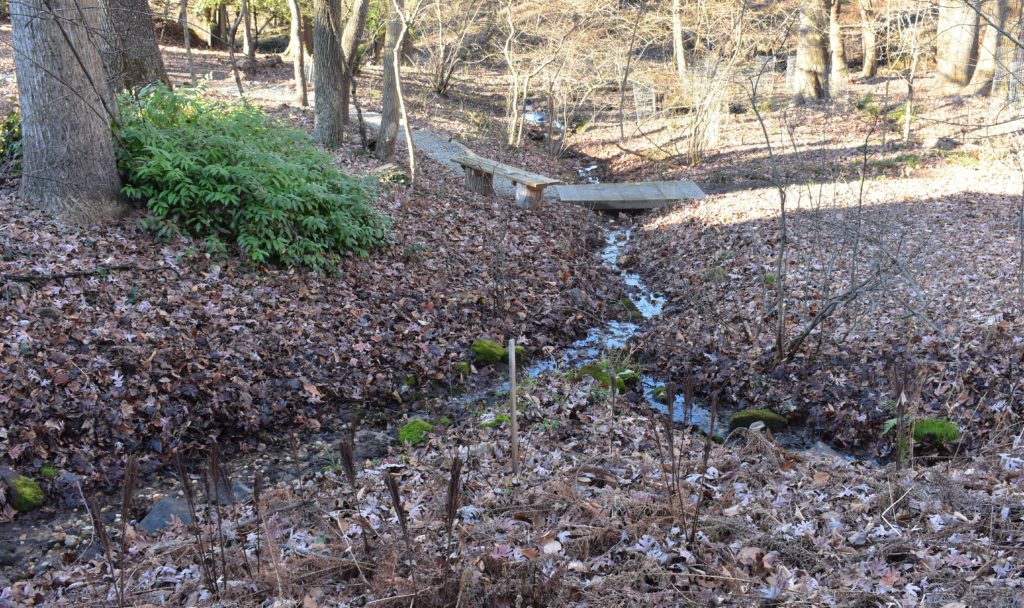
However, the springs can be clearly visible this time of year. The largest two springs, next to the playground, form the headwaters of a perennial brook.
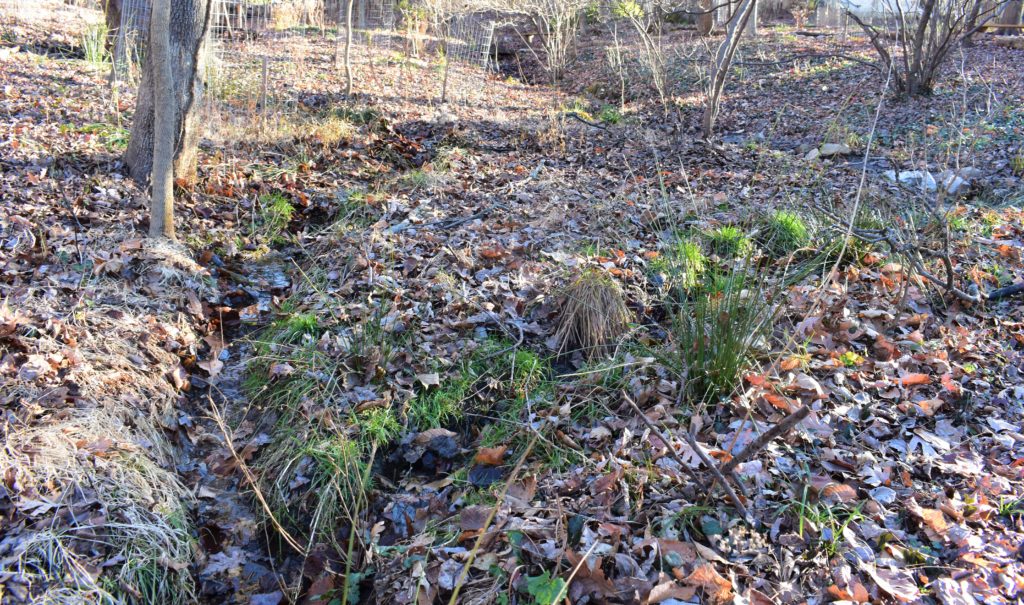
The brook, with several shady pools, flows into a small wetland filled with sedges and rushes.
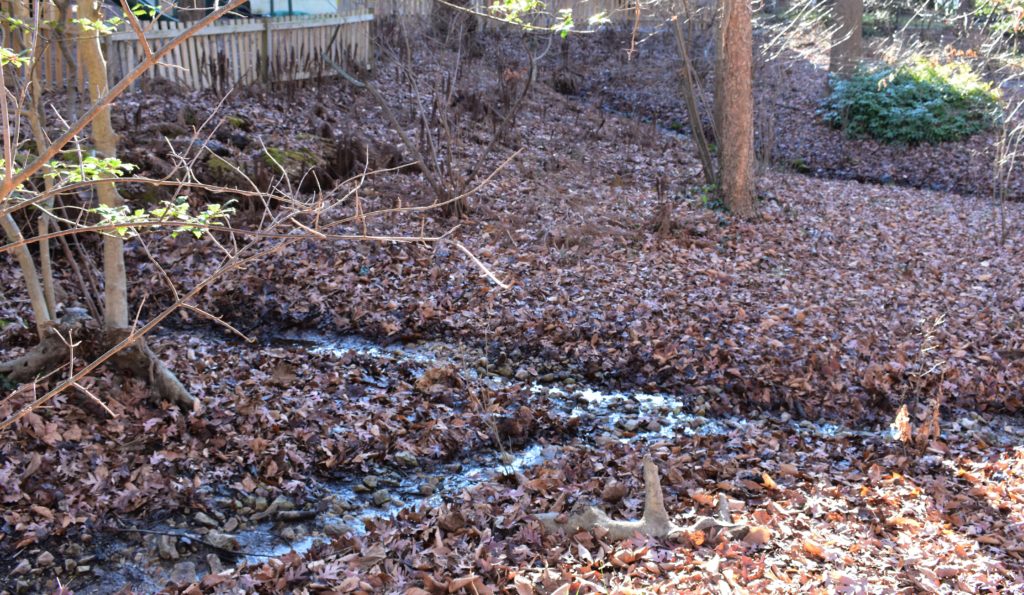
A second pair of springs feeds a “trickle” or “rill” that flows under a second bridge to merge downstream with the perennial brook in the wetland. A “seep” that only appears when the water table is sufficiently high moistens soil in a channel, or runnel, under the third bridge.
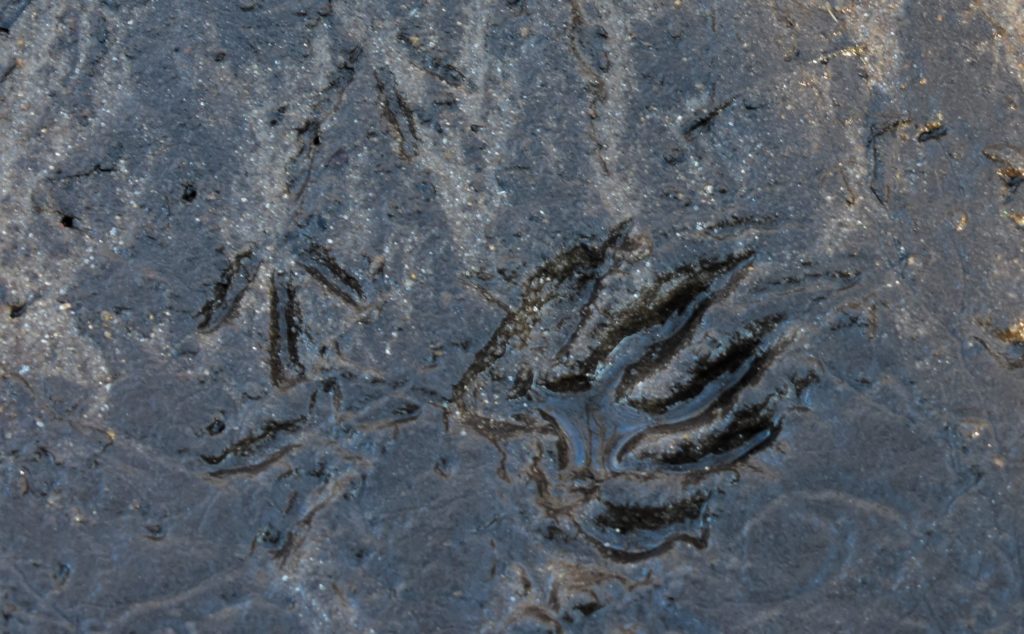
Evidence of mammal and bird life is common along around the springs.
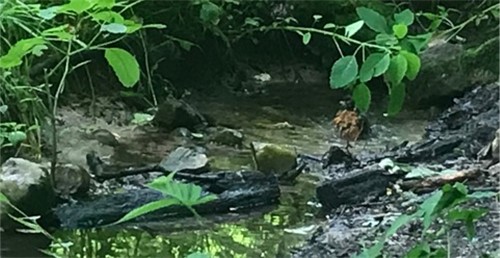
Birds frequently take baths in the pools.
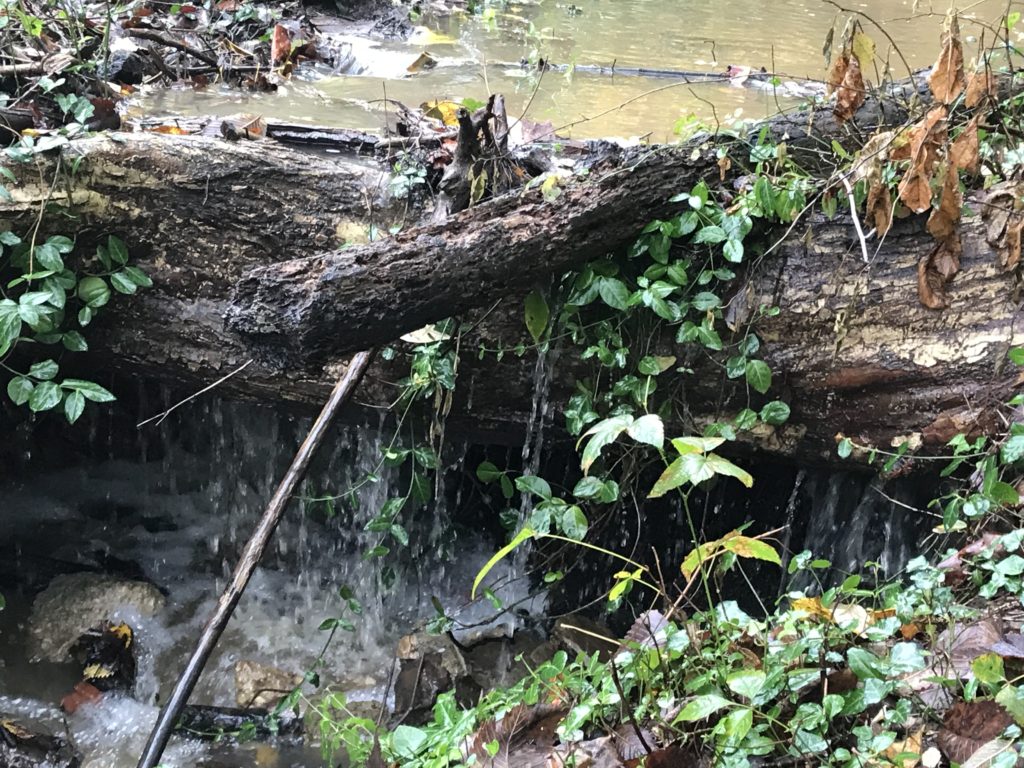
A log dam helps to maintain the wetland area before the water flows into a culvert and into Minnehaha Branch which flows along Goldsboro Road and ultimately into the Potomac River above Lock 7. This photo show an above average flow after a rain storm.
We encourage folks to visit the conservation area and to sit on one of the benches near the brook.
Peace,
Andrea and Joe
